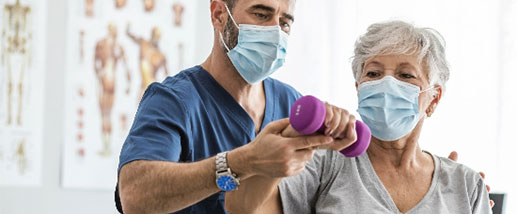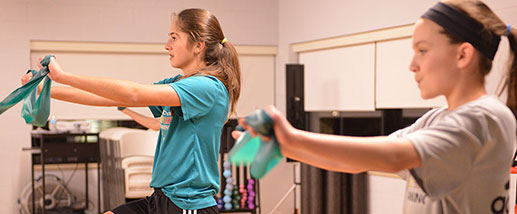Audition Rotation

Audition Rotations
Trinity Health Livonia Hospital is in Livonia, Michigan and is one of the hospitals in the Trinity Health Michigan. We offer many unique qualities in an emergency medicine residency. Our hospital features a newly built 56-bed emergency department including zones for fast track, senior ER, behavioral, acute care and four trauma rooms.
Along with our facility comes new equipment including four ultrasound machines in the ED, two Mindray M9, a Sonosite Edge, and a Sonosite M-Turbo, dedicated in-department CT, and a stroke robot that is used in collaboration with Michigan Stroke Network. The American College of Surgeons (ACS) have granted us accreditation as a level II trauma center. Additionally, we offer 24-hour cath lab for PPCI.
Currently, at our facility, we are using EPIC for our EMR. Each of our attendings are board-certified / board-eligible emergency medicine and have varying interests ranging from critical care to emergency ultrasound. Our program is one of seven at our facility including family medicine, internal medicine, psychiatry, transitional, and podiatry.
As our residency is affiliated with Michigan State University - College of Osteopathic Medicine, we participate in the Michigan Statewide Campus System (SCS). In addition to our weekly didactics at Trinity Health Livonia, we meet once a month for SCS with all other surrounding EM residents. At SCS, lectures are provided from guest EM speakers. They also sponsor multiple SIM labs / other events that are held throughout the year.
We offer the following 4-week rotations from August through January to students who are in good standing with their medical school and who have passed COMLEX/USMLE Step 1 on the first attempt.
Traditional Audition Rotation:
During your rotation in the ED, you will be able to manage patients under the supervision of the upper-level residents and attendings. Our goal for you will be to manage patients from triage until disposition. During each shift, you will follow your patient's labs/imaging studies and recommend treatments based on the results. You will be able to assist with procedures given your comfort level and prior experience. We will also schedule you on shifts with our program director, associate program director, clerkship director during your rotation. We have recently added dedicated procedural practice for during didactics, small group sessions with the PD, and the opportunity to do an ultrasound shift during your rotation here. Ultimately, we hope that you will have a great rotation with us and that you will have some fun along the way.
EM/Ultrasound Rotation:
This 4-week Ultrasound Rotation is designed to introduce enthusiastic medical students to Emergency Medicine Point-of-Care Ultrasound and help to develop the necessary skills for a career as an Emergency Medicine physician. Our department has a top-of-the-line Mindray M9 ultrasound system as well as an additional Sonosite Edge and Sonosite M-turbo ultrasound unit. Utilizing this equipment, you will work along-side Emergency Medicine residents and the Ultrasound Director within the Emergency Department. Students spend two weeks doing ultrasound and two weeks in the department.
The use of Point-of-Care Bedside Ultrasonography in the Emergency Department has grown exponentially over recent decades and has become the standard of care in treating our patients. Numerous benefits exist to incorporating bedside US into your practice including increased patient satisfaction, faster door to diagnosis time, improved accuracy of diagnosis and decreased patient ED length of stays. The goals of this US rotation are to ensure an understanding of fundamental concepts of bedside ultrasonography including:
- US physics
- Knobology and transducers
- Image acquisition (125 Ultrasound examinations divided amongst the 11 ACEP recommended core studies)
- Image interpretation including understanding of relevant anatomy, pathology, and image artifacts
- Time is set aside specifically for image review at the end of each week
- Efficient incorporation into clinical practice
- Appropriate documentation and quality assurance
- Review landmark US literature during journal club during the rotation
- End or rotation competency assessment
Description of Didactic Experience
The medical student will attend weekly Emergency Medicine conferences.
Audition rotation options available by search Trinity Health Livonia on the VSLO website Visiting Student Learning Opportunities or email the following information to tammy.lee@trinity-health.org.
Requested Rotation:
Requested Rotation Start and End Dates:
Curriculum Vita
COMLEX/USMLE Step 1 score report/transcript
Name of Medical School:
Medical School Contact Person:
Contact Person Phone Number:
Contact Person Email Address:
Upon confirmation of an affiliation agreement with your medical school and approval of the dates you have requested we will email you application instructions.
Thank you for your interest in an Emergency Medicine rotation at Trinity Health Livonia.




